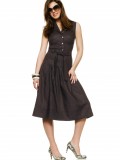Read this ebook for free! No credit card needed, absolutely nothing to pay.
Words: 45580 in 21 pages
This is an ebook sharing website. You can read the uploaded ebooks for free here. No credit cards needed, nothing to pay. If you want to own a digital copy of the ebook, or want to read offline with your favorite ebook-reader, then you can choose to buy and download the ebook.


: Records Historical and Antiquarian of Parishes Round Horncastle by Walter J Conway James Conway - Parishes England Horncastle History
ENGRAVINGS.
PAGE
THE ORANGE GARDEN, TRAVELLING IN ITALY, 11 A CHURCH AT FLORENCE, 23 READING THE ARTICLES, 55 EMBLEMS ON THE CROSS, 63 ASCENDING THE MOUNTAINS, 67 SITUATION OF NAPLES, 77 VIEW THROUGH THE GLASS, 87 CALASH COMING INTO NAPLES, 111 THE ASCENT, 127 VIEW OF THE CRATER, 137 COMING DOWN, 153 THE MOSAIC, 183 THE PUBLIC GARDENS, 197
ROLLO IN NAPLES.
THE VETTURINO.
The vetturino usually takes the entire charge of the party, and provides for them in every respect,--that is, if they make the arrangement with him in that way, which they generally do, inasmuch as, since they do not, ordinarily, know the language of the country, it is much more convenient for them to arrange with him to take care of them than to attempt to take care of themselves. Accordingly, in making a journey of several days, as, for example, from Genoa to Florence, from Florence to Rome, or from Rome to Venice, or to Naples, the vetturino determines the length of each day's journey; he chooses the hotels where to stop, both at noon and for the night; he attends to the passports in passing the frontiers, and also to the examination of the baggage at the custom houses; and on arriving at the hotels he orders what the travellers require, and settles the bill the next morning. For all this the travellers pay him one round sum, which includes every thing. This sum consists of a certain amount for the carriage and horses, and an additional amount of about a dollar and a half or a dollar and three quarters a day, as agreed upon beforehand, for hotel expenses on the way. Thus, by this mode of travelling, the whole care is taken off from the traveller's mind, and he has nothing to do during the daytime but to sit in his carriage and enjoy himself, and at night to eat, drink, sleep, and take his comfort at the hotel.
It was at Florence that Mr. George and Rollo first commenced to travel with a vetturino. They came to Florence by steamer and railway; that is, by steamer to Leghorn, and thence across the country by railway. Florence is a very pretty place, with the blue and beautiful River Arno running through the middle of it, and ancient stone bridges leading across the river from side to side. The town is filled with magnificent churches and palaces, built, some of them, a thousand years ago, and all so richly adorned with sculptures, paintings, bronzes, and mosaics, that the whole world flock there to see them. People go there chiefly in the winter. At that season the town is crowded with strangers. A great many people, too, go there in the winter to avoid the cold weather which prevails at that time of the year, in all the more northerly countries of Europe.
There is so little winter in Florence that few of the houses have any fireplaces in them except in the kitchen. When there comes a cold day, the people warm themselves by means of a jug or jar of earthen ware, with a handle passing over across the top, by which they carry it about. They fill these jars half full of hot embers, and so carry them with them wherever they want to go. The women, when they sit down, put the jar under their dresses on the floor or pavement beneath them, and the men place it right before them between their feet.
You will see market women and flower girls sitting in the corners of the streets in the winter, attending to their business, and keeping themselves warm all the time with these little fire jars; and artists in the palaces and picture galleries, each with one of them by his side, or close before him, while he is at work copying the works of the great masters, or making drawings from the antique statues.
There is another very curious use that the people of Florence make of these jars; and that is they warm the beds with them when any body is sick, so as to require this indulgence. You would think it very difficult to warm a bed with an open jar filled with burning embers. The way they do it is this: they hang the jar in the inside of a sort of wooden cage, shaped like a bushel basket, and about as large. They turn this cage upside down, and hang the jar up in it by means of a hook depending inside. They turn down the bed clothes and put the cage in it, jar of coals and all. They then put back the bed clothes, and cover the cage all up. They leave it so for a quarter of an hour, and then, carefully turning the clothes down again, they take the jar out, and the bed is warmed.
But to return to Mr. George and Rollo. They engaged a vetturino for the first time at Florence. Mr. George had gone to Florence chiefly for the purpose of examining the immense collections of paintings and statuary which exist there. Rollo went, not on account of the paintings or statues,--for he did not care much about such things,--but because he liked to go any where where he could see new places, and be entertained by new scenes. Accordingly, while Mr. George was at work in the galleries of Florence, studying, by the help of catalogues, the famous specimens of ancient art, Rollo was usually rambling about the streets, observing the manners and customs of the people, and watching the singular and curious scenes that every where met his eye.
The reason why there are so many paintings and sculptures in Italy is this: in the middle ages, it was the fashion, in all the central parts of Europe, for the people to spend almost all their surplus money in building and decorating churches. Indeed, there was then very little else that they could do. At the present time, people invest their funds, as fast as they accumulate them, in building ships and railroads, docks for the storage of merchandise, houses and stores in cities, to let for the sake of the rent, and country seats, or pretty private residences of various kinds, for themselves. But in the middle ages very little could be done in the way of investments like these. There were no railroads, and there was very little use for ships. There was no profit to be gained by building houses and stores, for there were so many wars and commotions among the people of the different towns and kingdoms, that nothing was stable or safe. For the same reason it was useless for men to spend their money in building and ornamenting their own houses, for at the first approach of an enemy, the town in which they lived was likely to be sacked, and their houses, and all the fine furniture which they might contain, would be burned or destroyed.
Free books android app tbrJar TBR JAR Read Free books online gutenberg
More posts by @FreeBooks

: Introduction to Our Bird Friends Volume 2 by Carson Lenwood Ballard Rice Orville O Illustrator - Birds Kansas


: The Corner House Girls Solve a Mystery What It Was Where It Was and Who Found It by Hill Grace Brooks Gooch Thelma Illustrator - Treasure troves Juvenile fiction; Mystery and detective stories; Sisters Juvenile fiction; Families Juvenile fiction; Chinese






